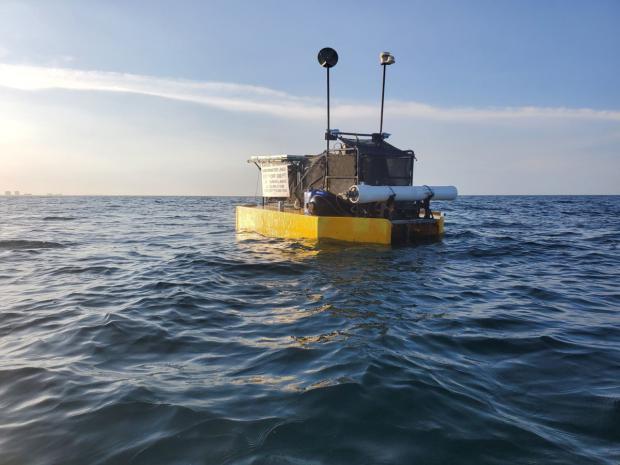
Breaking News
 James O'Keefe: My entire speech at AmericaFest 2025. We're not stopping. Join us to expose..
James O'Keefe: My entire speech at AmericaFest 2025. We're not stopping. Join us to expose..
 U.S. vs. Chinese Military Comparison – Focus on Asia-Taiwan Scenario
U.S. vs. Chinese Military Comparison – Focus on Asia-Taiwan Scenario
 DoJ Sues Four More States for Failing To Produce Voter-roll Data
DoJ Sues Four More States for Failing To Produce Voter-roll Data
 World's Largest Aviation Giant Abandons Google Over Security Concerns
World's Largest Aviation Giant Abandons Google Over Security Concerns
Top Tech News
 Perfect Aircrete, Kitchen Ingredients.
Perfect Aircrete, Kitchen Ingredients.
 Futuristic pixel-raising display lets you feel what's onscreen
Futuristic pixel-raising display lets you feel what's onscreen
 Cutting-Edge Facility Generates Pure Water and Hydrogen Fuel from Seawater for Mere Pennies
Cutting-Edge Facility Generates Pure Water and Hydrogen Fuel from Seawater for Mere Pennies
 This tiny dev board is packed with features for ambitious makers
This tiny dev board is packed with features for ambitious makers
 Scientists Discover Gel to Regrow Tooth Enamel
Scientists Discover Gel to Regrow Tooth Enamel
 Vitamin C and Dandelion Root Killing Cancer Cells -- as Former CDC Director Calls for COVID-19...
Vitamin C and Dandelion Root Killing Cancer Cells -- as Former CDC Director Calls for COVID-19...
 Galactic Brain: US firm plans space-based data centers, power grid to challenge China
Galactic Brain: US firm plans space-based data centers, power grid to challenge China
 A microbial cleanup for glyphosate just earned a patent. Here's why that matters
A microbial cleanup for glyphosate just earned a patent. Here's why that matters
 Japan Breaks Internet Speed Record with 5 Million Times Faster Data Transfer
Japan Breaks Internet Speed Record with 5 Million Times Faster Data Transfer
Wave-Powered Desalination System Produces 13,000 Gallons of Drinking Water a Day From Each Buoy

300 million people rely on seawater from a global industry of 21,000 desalination plants, nearly all of which use fossil fuels to complete the energy-intensive process of thermo-desalination, or reverse osmosis—the two methods that can turn seawater into clean water at scale.
The startup Oneka however uses modular machines that attach to the seafloor like buoys and convert the kinetic energy of 3-foot waves into mechanical energy that drives a reverse osmosis and creates 13,000 gallons of drinking water a day with the largest commerically-available module.
It's expected that if the worst predictions of climate change come to pass, more and more of the world will rely on desalinated water at least some of the year according to data collected by the BBC, and the industry is predicted to grow 9% to a yearly value of $29 billion by 2030.
Oneka presents a suite of advantages over land-based desalination plants. The first is that it takes up no space on land; particularly important for island nations. The second is that their modules emit no greenhouse gases. The third has to do with a drawback of desalination technology as it stands.
Whether using the thermal process or reverse osmosis, desalination of seawater creates a waste product of highly saline brine water or salt. If released or leaked back into the ocean, it can poison acres of sea life, or plants and groundwater if released on land.
Oneka's technology mixes the saline solution with three-quarters of all the seawater taken up in a single day, releasing it back into the ocean with a mere 25% greater content of salt than before.
The module desalinators can be chained next to each other to conserve space and make it easier for the piping system that transfers the clean water on land to be installed.

 Advanced Propulsion Resources Part 1 of 2
Advanced Propulsion Resources Part 1 of 2

